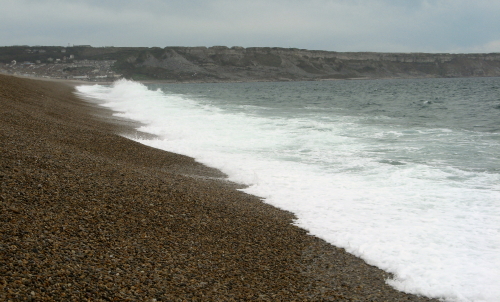Does anyone know where the love of God goes
when the waves turn the minutes to hours?
Gordon Lightfoot, Wreck of the Edmund FitzgeraldIn the past eight years, I have dodged at least four hurricanes between Cape Cod and Halifax (when they'd altered course away from wherever I'd been), but in each case everyone had plenty of warning of what was oncoming, as did all shipping traffic, so appropriate steps could be taken to minimize damage and loss of life. These days, we often have up to a week's notice before a hurricane makes landfall, and ordinary citizens are able to track it on the National Hurricane Center's website for themselves. This, along with a steady feed of media obsessing around the weather day after day, makes us barely able to imagine what it was like twenty years ago, never mind three or four hundred years ago, for the sailors and coastal communities whose lives were directly affected by extreme weather, and who had virtually no warning before the gales and high seas hit.
In the last couple of days, I've been reading about the storms and wrecks that most affected Portland and surrounds in the past. The very worst of the storms -and there were some horrifically destructive ones - all occurred in November. I was launched on this quest after reading one of Elizabeth Pearce's journal entries in Old Portland, in which she describes her state of mind on her 14th birthday (January 9th, 1796).
...I somehow felt older this winter; it has been so sad. The storms have been terrific, especially one in November. And the most terrible thing chanced here that has happened since the old, old days when the Danes used to land in the night (or the French), and burn and kill all before them. A lot of men-of-war got in our bay in the storm; and once in, they couldn't get out, or keep off the dreadful rocks. The long cruel swish of the waves, and the jagged rocks! Good God, but it was awful! I hear them every night when I lie down...
Over a thousand poor souls perished...
And none of us have had heart for anything since. Every time the wind rises, we look at each other and turn pale... We put up no holly nor mistletoe, and the mummers had no heart in them. We wished each other a happy new year from our hearts, hoping never to know such another winter. And Wyke churchyard is getting very full; for they bury the poor washed up bodies there.
The storm that Eliza is referring to was a hurricane that came careening into the Dorset coast on the 17th-18th November, 1795. There was a naval fleet of ships (these were Eliza's "men-of-war"), heading from Portsmouth to the West Indies that got tangled up in it that day on their way to "fight the French". [The arch-enemy, Napoleon, had yet to meet his Waterloo.] And it was these unfortunate souls who accounted for most of the casualties.
Before this, there was an even mightier storm on the 26th of November, 1703. This was probably the most destructive thing to hit England right up until the days of the Third Reich. Daniel Defoe described it as being "like an Army of Terror in its furious march". Between Cornwall and the Wash, an estimated 8,000 people were killed. This storm is still considered to be the worst one in British history.
Another infamous November hurricane was a killer known as the Great Gale of 1824, that smashed into Devon and Dorset on the 22nd-23rd of November of 1824. This is the one that was immortalized in Moonfleet. [And for my young relations in Canada who haven't yet read this - you're all getting copies of it for Christmas. I first read this when I was 10 or 11 (and I got it for Christmas, come to think of it), and did such a fine book report on it for school, that it was put on display in the library - where we can be sure that no one else ever looked at it.] The Fleet was flooded in the surf that broke over Chesil Bank in the massive storm surge; reports say that sea water was as high in the Fleet as the bank itself, which is very difficult to imagine if you've seen it. The ferry house for Portland was inevitably washed away and the ferryman drowned, along with many others from the ruined villages.
Picture credit: http://www.richardhellergallery.com/dynamic/artwork_detail.asp?ArtworkID=1178
P.S. Here's the rest of the song, now that I've put it into your heads. I found out today that I can put a YouTube video right on the blog page instead of adding a link. This one is a family favorite when the guitars are out and the talent gets going.
Picture credit: http://www.richardhellergallery.com/dynamic/artwork_detail.asp?ArtworkID=1178
















